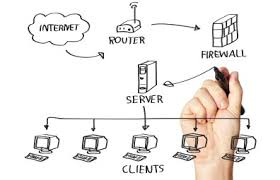Getting Compliant Starts With a Network Audit
- Compliance
- Compliancy
- Compliant
- Cybersecurity
- Cybersecurity compliance
- Cybersecurity compliance program
- Hardware
- IT Consultant
- IT Consulting
- IT Department
- Malicious Software
- Malware
- network administrator
- Network Assessment
- Network Audit
- network auditing software
- Network Health
- Network Security
- Ransomware
- Regulations
- Regulatory Compliance
- Software
A network audit is the process in which your network is mapped both in terms of software and hardware. Network audits are a must for any organization because networks are dynamic entities with their constant changing size and form. If someone asked you today to list all your IT assets, would you be able to? Taking that one step further, do you know if all your systems are up and running full speed? Controlling the hardware and software in your organization 100% is simply not possible. Users download new software all the time; can you be sure they are notifying the system administrator of every instance of this? These activities can have drastic repercussions on network security, so the network administrator will need to perform regular network auditing and monitor any changes to the preset baseline. The increased threat from malware and ransomware is forcing organizations of all sizes and shapes to take additional steps to ensure they are protected from a security breach. One vulnerability in your firewall is all it takes for your organization to be at risk. Running outdated software is a huge security threat because if you aren’t keeping up with patches, you are vulnerable. Your organization will not be able to get compliant, if your network is not secure.

Most organizations must abide by and maintain a standard for controls that safeguard the confidentiality and privacy of information stored and processed. Part of getting compliant means you must have a secure network. Not only do you have to learn about your required compliances, you must understand and obtain the proper agreements, and be able to access the relevant system architecture information. The administrator needs to know what machines and devices are connected to the network. Network auditing software gets installed on premise and gathers information about PCs, servers, network infrastructure, applications and more. A good network audit will also include what hardware makes up each machine, what policies affect that machine and whether it is a physical or a virtual machine. The more detailed the specification, the better. You need to compile a full list of hardware including printers, fax machines, routers, access points, network storage and any other device that has connectivity with the network.
Once the machines running on the network are mapped, an audit of what software is running on each of the machines should happen. Network auditing software can document which services are installed, which are running and which are stopped. The audit for the machines can be finalized by noting which ports each machine listens on and what software is running at the time of the audit. The last step is to analyze the data and to bring all parts of the network up to standard. This allows for the administrator to have an effective security/inventory baseline for all machines on the network. Once you have your security/inventory baseline, you can run regular audits to detect any abnormalities in your network. This will help you keep up with software licenses, outside threats to your systems, theft, use of unauthorized devices, etc.
2W Tech’s Cybersecurity Compliance Program was designed to support businesses with their compliance obligations. We understand that a network audit is an essential first step in helping your organization get and stay compliant. Give us a call today to learn more about the 2W Tech’s Cybersecurity Compliance Program.
Read More:
Selecting Hardware For Your IoT Deployment
DIgital Manufacturing Trends: IoT Acceleration
Building a Business Case for Business Continuity Whitepaper
Enjoyed reading this article? Click the button below to download this asset.
Download “Business Continuity Whitepaper” Now
Building a Business Case for Business Continuity
Please complete the form to download the file.